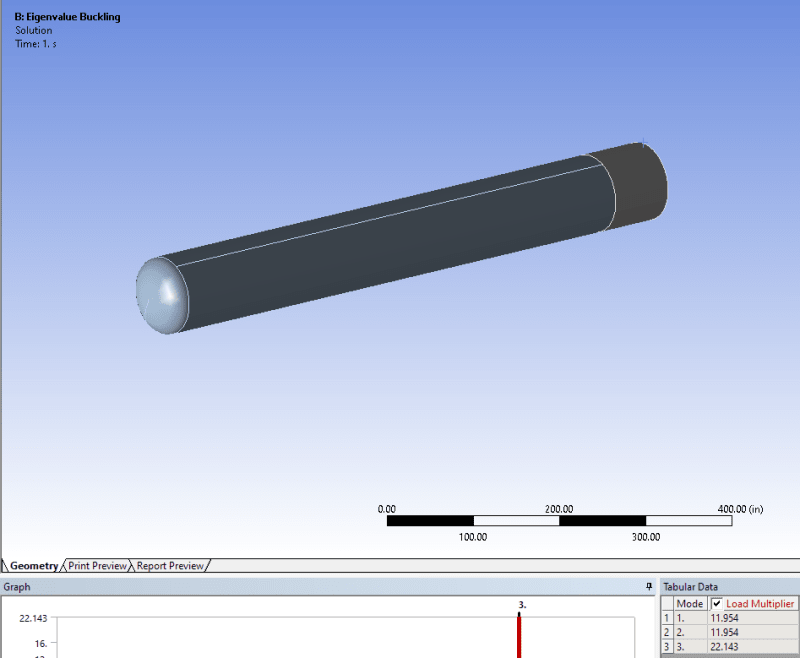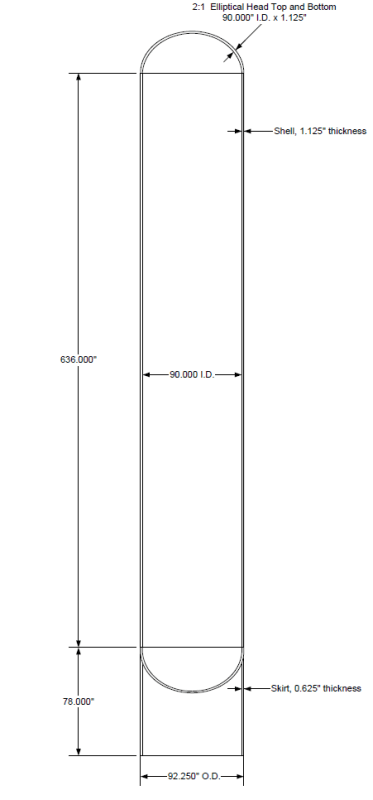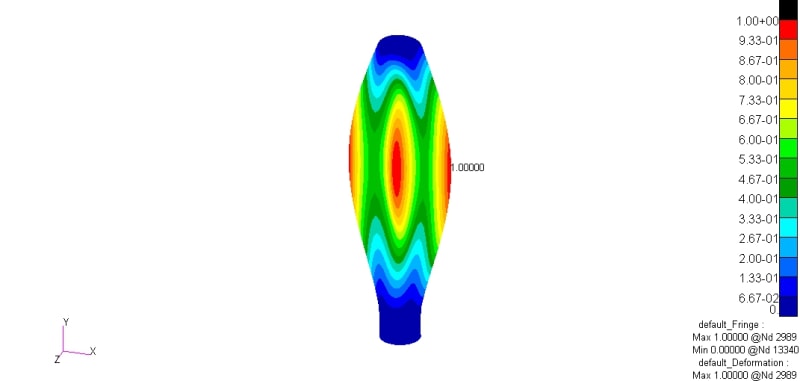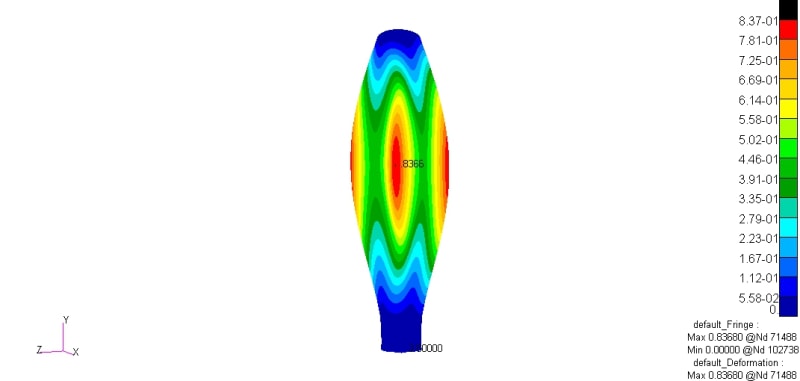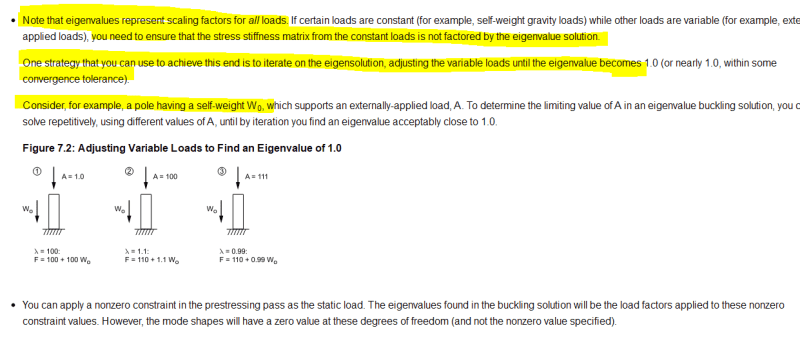I was able to get some computing time at a local university over the weekend that uses Inventor Nastran 2020.
To check the validity of the code for buckling I took a problem that can be hand calc'ed.
I took the same example as your ASME pressure vessel, removed the elliptical heads replaced them with flat end-plates, and removed the skirt.
So essentially the model is a cylinder with flat end-plates. I loaded it with an overall external pressure and used a 'classical' simple support condition at the ends.
Steel is used as the material.
The critical buckling stress is provided in Rotter's text chapter 5 eq(8)
Here is the summary of the hand-calc
E = 2.90E+07 psi
nu = 0.3
t = 1.125 in
r = 45.563 in
L = 636 in
Z = 7527.918
L/r = 13.959
Scr = 6407.300 psi
Pcr = 158.205 psi
Modeled the problem in both MSC.Nastran and Autodesk Nastran using 4-noded CQUAD4 shell elements of element size 2.5 inches.
Ran a linear buckling analysis and here are the results:
Pcr (Theory) = 158.205 psi
Pcr(MSC.Nastran) = 159.870 psi
Pcr (Inventor) = 211.120 psi
% difference Pcr(FEA) / Pcr(Theory)
MSC.Nastran = +1%
Inventor Nastran = +33%
So there is your +30% that you were talking about in your earlier posts. For a simple test problem Inventor over-estimates the buckling pressure/stress by +30%.
The static analysis b/w both codes are identical. Peak deflection is at the flat end-plates. Both codes register 0.022in as the peak deflection under 1psi pressure.
So there is something going wrong in the buckling solution in Inventor. Maybe the differential stiffness formulation is a suspect or the implementation of eigenvalue solver
is a suspect. But if I were you I would junk this code as it can't predict a classical hand calc'ed problem!
I don't have access to ANSYS but it’s a well respected code in the industry so I wouldn't expect it to misbehave for such problems.
